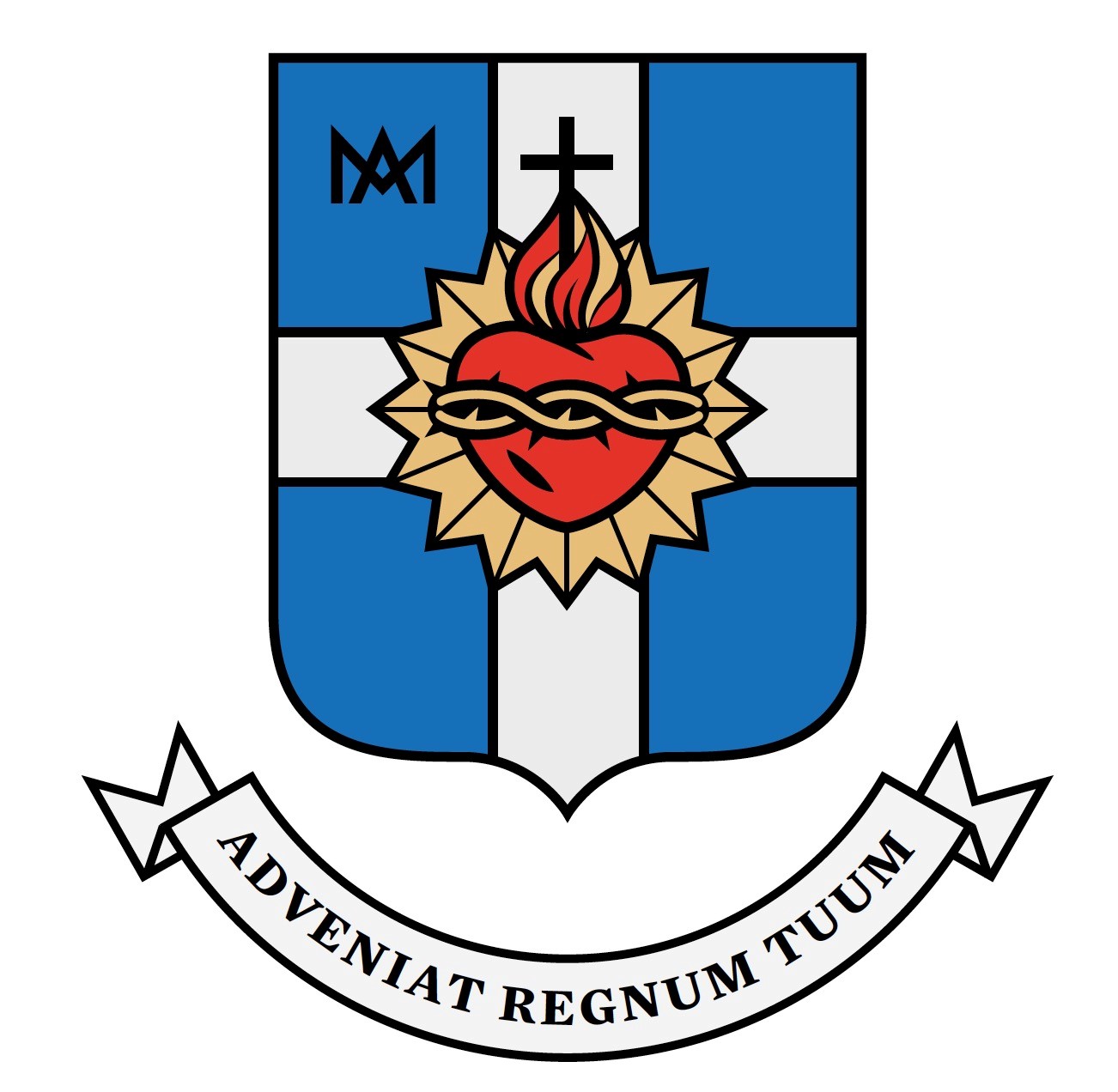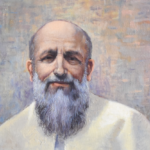Devotion to the Sacred Heart is connected with every mystery and every phase of Our Lord's life. It explains everything in the one word: “Love”. This text is excerpted from León Dehon's book "Le Coeur Sacerdotal de Jésus," 1907.
“You have given them bread from heaven, containing in itself all sweetness.” These words from the Book of Wisdom are as applicable to devotion to the Sacred Heart as to the Blessed Sacrament; for here, as in the Eucharist, we have a bread from heaven containing in itself every flavour. Like the manna in the desert and the Eucharistic Manna, this devotion is a heavenly food which has every taste, every spiritual taste, and is adapted to every soul regardless of its condition, its needs or inclinations.
Devotion to the Sacred Heart is connected with every mystery and every phase of Our Lord’s life. It explains everything in the one word: “Love”.
As the faithful find in this devotion all motives for confidence and every encouragement to virtue, priests will find in it the Ideal and the Model for their sacerdotal life.
When devotion to the Sacred Heart first made its appearance, the Heart of Our Blessed Lord was not depicted in any way. Its devotees rather centred their considerations on the thoughts and the interior sentiments and affections of Our Blessed Lord. They looked upon His Heart as the organ through which we give God what is due to Him. It was the Heart of our Divine Mediator and Supreme Pontiff, the Instrument of our worship of the Blessed Trinity. They considered habitual union with this Divine Heart the best means of fulfilling our daily tasks in a perfect manner. Their attitude is summed up in the words of the Canon of the Mass: “Through Him, and with Him, and in Him, O God almighty Father… all glory and honour…”
“Through Him.” – Our Blessed Lord shows Himself our divine Mediator and supreme Pontiff by the love of His Sacred Heart. His whole life of labour here on earth was spent in giving glory to His Father in our behalf. This work of salvation is especially precious in the sight of His heavenly Father because it emanates from His Sacred Heart and is animated by His love.
“With Him.” – Our Blessed Lord is our Brother, our Pontiff, and our Advocate with the Father. When we offer our prayers to God (and every good work is a prayer), we unite them to those of our Brother Whose Sacred Heart is a thousand times more loving than our own. When with Him we utter those loving words, “Our Father,” our hearts lose themselves in the tender Heart of that Brother, of that Priest, Who in the tabernacle and in heaven takes care of all of our obligations to God and renders our homage to Him.
“And in Him.” – As in Him we offer up our prayers and our works, all of us-priests and faithful-share as it were in His Priesthood. A holy and priestly race… All the saints in heaven, all those on earth and in purgatory, all Christians, have but one Heart in Christ, one Priestly Heart offering Its praise, love, and sacrifice to God. “Let this mind be in you which was also in Christ Jesus” (Philip. 2,5).
“All honour and glory.” – All the honour and glory that God receives from us passes through the Sacred Heart of Jesus, the Heart of our Mediator and Priest. All else is nothing in the eyes of God.
This doctrine was thrown into strong relief by those two great seraphic souls of the Benedictine Order: Saint Gertrude and Saint Mechtilde.
It was brought out still more in the flourishing days of the Oratory in France. M. Olier, founder of the Sulpicians, employed it in his writings, especially in his “Offices of the Priesthood” and “The Interior Life of Our Lord.” St. John Eudes, a disciple of Cardinal de Berulle and of Father de Condren, traced the doctrine to its source. He saw clearly that all originates in the Heart of Jesus and he therefore began to present the image of the Sacred Heart Itself for our veneration.
Since the revelation of Paray-le-Monial we have followed St. John Eudes in regarding the Sacred Heart of Jesus not merely as the organ through which we render homage to God, but as the object of our worship and our love. Our Blessed Lord asked this in His revelations to St. Margaret Mary. He veiled, so to speak, the splendour of His divinity beneath the lovableness of His Heart, and summed up the whole picture of Redemption in the words: “Behold the Heart Which has loved men so much!” He then asked for a return of love for love. Till that time the priestly character of the Heart of Jesus had not been brought out sufficiently.
We now see the Heart of Jesus immolating Itself for us as Priest and Victim, proving Its love for us by sacrificing Itself on the Altar of the Cross. Christ shows us His Heart of flesh as a symbol of His love, and he asks us to honour this symbol and still more to honour His love itself – that love, wounded by the sacrifice which was symbolized by the lance – thrust and the thorns, the love of a Priest and voluntary Victim.
Like different phases of one and the same sacrifice, the principal manifestations of this love – the Incarnation, the Passion, and the Eucharist – are the great priestly acts of Our Saviour’s life. His whole life was, in fact, one grand act of adoration and of love through the continual exterior immolation of His sufferings, humiliation, and poverty, and the interior humiliation of continual adoration and love. In His Eucharistic life, adoration and love, the primary ends of sacrifice, have the most important place. Every heartbeat of Christ was also an act of gratitude to His Father. The Gospel records many instances of His “giving thanks,” another end of sacrifice. The Sacrifice of the Altar is likewise ever to be identified with thanksgiving. The very word “Eucharist” means “thanksgiving.” Prayer is the third end of sacrifice. Sacerdotal prayer permeated the entire life of our Saviour. He lived to pray, and He prayed night and day: “Always living to make intercession for us.” (Heb 7:25)
The fourth end of sacrifice is reparation. There is nothing that came more often from the lips of Our Saviour in His revelations to St. Margaret Mary. As the fruit comes from the flower, so reparation is born of love and gratitude. The Heart of Jesus, beating in reparation during His mortal life and in the Eucharist, is the Organ and Model of our own reparation.
The Heart of Jesus is justly called the Heart of a Priest and is to be honoured as such by us priests. The devotion to the Priestly Heart of Jesus has as its object the Sacred Heart of Jesus as Priest and Victim so well portrayed for us in the hymn of Paschal-Tide:
“Almique membra corporis Amor sacerdos immolat.”
The Sacred Heart immolates Itself and the body which It animates: “Amor sacerdos immolat” This life as Priest and Victim, whose principle is the Sacred Heart, sums up the whole life of Our Lord and all His interior and exterior activities. Thus the three great streams of love – the Incarnation, the Passion, and the Eucharist – flow from this ocean of love, and return after traversing the world in their vivifying and salutary course. In the Heart of Jesus, Priest and Victim of love, we find all the mysteries of salvation, all the gifts and blessings of God, and all the riches of His grace and mercy.
Let us contemplate this Priestly Heart; let us study Its thoughts, feel Its throbbings, and meditate on Its love. Here we will find all priestly virtues and all of the duties, the life, and the whole perfection of the priest. By close contact with the Priestly Heart of Jesus we shall become true and holy priests.




